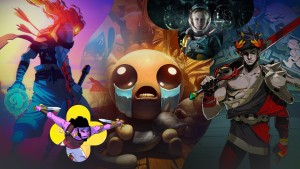Please support Game Informer. Print magazine subscriptions are less than $2 per issue
Stare Into The Dark Below – New Details On The Destiny Expansion
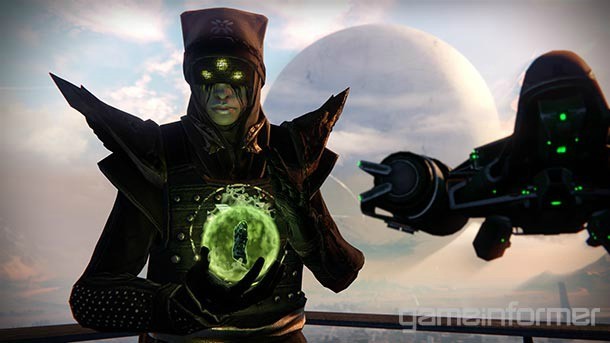
Our recently announced sci-fi issue of the magazine includes an extensive look at Destiny: The Dark Below. We traveled to Bungie several weeks ahead of launch and played through the expansion. We have a wealth of additional quotes from the developer and details in our issue, based on the snapshot of the game taken during our visit. However, we’ve pulled together some of the most relevant and game-changing details right here.
What’s Old Is New Again – Upgrading Exotics
The recent Destiny patch brought some notable changes to exotic weapons, but next week’s expansion offers some additional big adjustments. Specifically, exotic items will become available for an upgrade to keep them in line with the new top-tier gear.
Here’s how it works. Upgrading exotic weapons and armor is completed by interacting with the weekend vendor, Xur. When he arrives every Friday morning, he will now have a new option to upgrade one of your equipped exotic items. Each week, he’ll offer some (but not all) exotic items as being available to upgrade.
You’ll need three things. First, you need to own the original version of that exotic item, and turn it in to exchange for the upgraded version. It doesn’t matter if this old version of the item is brand new or fully upgraded. To complete the upgrade, you’ll also need to turn in an exotic shard. This recently introduced new material is available for purchase for seven strange coins from Xur, or by breaking down another existing exotic item in your inventory. Finally, each exotic upgrade costs a hefty dose of cash – around 7000 glimmer as of my playthrough of the expansion in mid-November. After turning all three of these things into Xur, he’ll hand you a brand new version of your item with a higher defense or attack value cap.
It’s important to note that this process resets the upgrades on your exotic item, but you’ll now have a new higher damage or defense cap to work towards – so you’ll need to decide if you’d rather keep your fully upgraded old version of a weapon or armor piece, or start over. With that said, the process of upgrading exotic items is now faster, and does not require ascendant materials. Instead, the last slot requires one additional exotic shard, as revealed in Monday’s patch.
With these changes in mind, players eager to start upgrading their exotics should be looking to save up glimmer this week, and also have enough strange coins on hand to purchase the requisite exotic shards.
Given this new feature, exotic items are ultimately far more valuable and important than standard legendary items. Where your older purple legendary items are left behind with the expansion, this change ensures that exotic items carry forward into the new content, and remain as powerful (and hopefully moreso) than new expansion-tier legendary items. It’s also important to note that these upgradeable exotics are available to all Destiny players once the expansion launches, not just the players who purchase The Dark Below. However, only owners of The Dark Below can get new exotics that launch with the DLC.
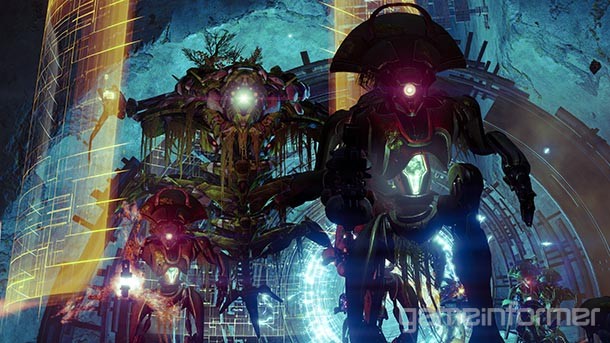
Eris Morn, Quest Lines, and Integrated Story
The Dark Below aims to respond to some of the narrative criticism received by the initial launch of the game, and offer a more interconnected approach to storytelling than before. I experienced the nature of this story firsthand, and the resulting structure feels like a single, discrete narrative with close ties between disparate content pieces.
The uniting factor of the narrative is the new vendor and quest giver, Eris Morn. As discussed in last week’s introduction video, Eris serves multiple roles in the story. Quest lines are the main way she propels the story forward, which are used to unite story missions, strikes, and the raid.
Quest lines are strongly inspired by exotic weapon bounties. Each quest line includes multiple steps, and the end of a quest line often provides a designated reward. For instance, the initial story mission quest line ends with the acquisition of Murmur, the new fusion rifle that can alternately fire both arc and solar damage.
Upon completing the story mission quest line, Eris offers two additional quest lines that carry the story past those missions with smaller, bite-sized events that you’ll track down in the game world. One of these quest lines provides a narrative path into the expansion’s strike, The Will of Crota. The other quest line provides a story lead-up to the expansion’s raid, Crota’s End.
These quest line bounties offer a number of different tasks. In one bounty, I needed to head down to Earth and kill enough Hive soldiers to draw out a particularly powerful Hive Knight, and kill him. In another bounty, I needed to take on the tricky task of melee killing cursed Hive Thralls, which explode upon death.
While these quest lines are just a first step for Bungie into a broader plan of expanding narrative context, they do indeed succeed at providing a more concrete grounding to the story. While Bungie offered no further details about future plans for quest lines, I am excited by the potential of the structure. I’d love to see these sorts of narrative frameworks provided by other characters in the Tower. For instance, I’d be excited about a quest line from the shipwright, Amanda Holliday, which leads to the acquisition of a specific new ship, or a quest line from the Speaker to procure a unique Hunter cloak. Both examples are complete conjecture, but the new quest line concept makes them conceivable.
[Next Page: New details on cooperative play, nightfalls, and changes to raid loot]
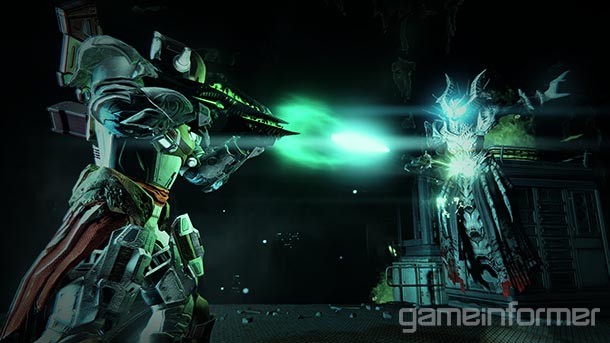
The New Cooperative Experience
I played through all three story missions cooperatively, and also tackled both new strikes and a hefty section of the new raid. The combined experience got me stoked to dive back in at home and explore these cooperative experiences with my regular gaming crew.
Players interested in a full walkthrough of each mission should check out our magazine article, but one feature stands out when these new cooperative experiences are examined together. In the same way that narrative is aiming to be more interconnected, the gameplay content itself also feels more integrated than before.
For example, one of the story missions introduces a Hive boss – a witch named Omnigul. This screaming terror sends swarms of enemies your way during a story mission, but you can’t beat her until later, when you go through the full strike that includes her at its conclusion.
In addition, the story missions and strikes introduce gameplay mechanics that become important later. For instance, one story mission applies a condition called “A Dark Burden,” which eliminates my guardian’s ability to use their vertical movement mode during a challenging fight – this same mechanic shows up later in a much more dangerous situation. Another story mission battle puts damaging energy circles down on the ground, forcing players to navigate carefully. These little additions to story missions provide some of the interesting dynamics previously exclusive to raiding; I’m happy to see Bungie drawing some of those engaging mechanics into the content being played by small fireteams and solo players.
Another important note for those high-level players out there: Both heroics and nightfall strikes will see an increase of two light levels once the expansion opens. So prepare for those level 30 nightfall challenges.
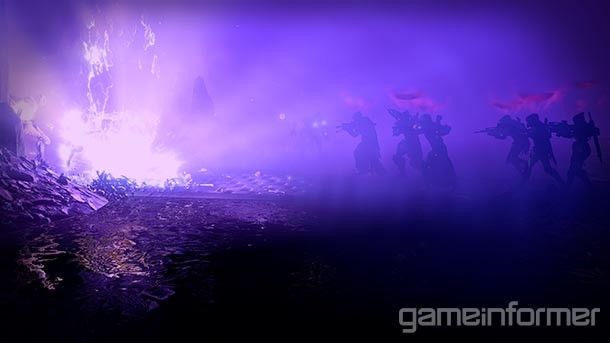
Raid Loot and Legendary Acquisitions
Some small but important changes are on the way to raiding and the loot that comes from raiding.
After the initial launch, Bungie noticed that many players were choosing not to fully upgrade their standard legendary gear, and instead were saving the shards and energy for the powerful gear that might drop for them in the raid.
To encourage players to embrace initial upgrades even as they wait for raid drops, ascendant materials are now used primarily to upgrade non-raid legendary gear. Raid gear is instead upgraded with radiant shards and energy, which are acquired in the Crota’s End raid. To put it another way, the raid has its own internally consistent upgrade economy.
In addition, if you don’t get the specific energy or shards you’re hoping for, Eris Morn offers an exchange, allowing you to trade in one for the other. Another way to get radiant shards and radiant energy is to break down unwanted items acquired in the raid.
Perhaps most importantly, the loot raid drops for Crota’s End have been refined from what we experienced in the Vault of Glass. Specifically, the game will pay closer attention to the drops you’ve already had, as well as how long it’s been since you get a “fun” drop (as opposed to just materials). While there’s still a significant component of randomness, Bungie strongly implied to me that players should have a more consistent reward experience with the raid than what has been experienced in Vault of Glass when the Crota’s End raid launches on day one of the expansion.
Looking ahead to 2015, players can expect that new raid primary weapons will only be available through the hard mode of the Crota’s End raid – set for launch in January.
Independent of raid loot, there are some new wrinkles involved in acquiring standard expansion-tier legendary gear. In addition to spending crucible or vanguard marks, buying new purple items now requires that you gain crucible or vanguard commendations. This reward is provided when you hit a new reputation level, and arrives via the postmaster. New legendary gear can be purchased by any Destiny player, regardless of whether you own The Dark Below.
[Next Page: Hands-on with the new Crucible maps, and a look at how Bungie plays its own game]
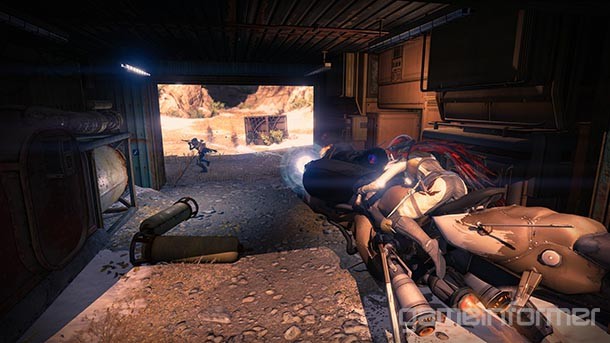
Back to the Crucible
In addition to plenty of PvE time, the competitive team at Bungie sat me down for a couple of hours of fragging through the three new competitive maps. In last week’s video, lead designer Lars Bakken introduced these three new maps, and each one offers some fun challenges.
Given the popularity of the Control game mode, Pantheon is undoubtedly going to be one of the most recognizable new locales. Set in the Black Garden, this symmetrical map offers lots of twists and turns along three distinct routes. When playing Control, the laterally aligned control points present an interesting strategic challenge, since your team can focus on trying to take the hotly contested center space, but can get in big trouble if it loses control of home base, leaving your team to get smashed in the middle.
Skyshock should be a welcome addition to vehicle enthusiasts, but based on my playtime, it should also draw in some players who were frustrated by earlier vehicle maps that could get dominated by canny vehicle drivers. Instead, Skyshock keeps one side of the map more focused on vehicle play, and the other side includes plenty of cover for infantry to stay largely segregated. The setting of a Hive crash site in the Cosmodrome also makes for some fun eye candy.
For my part, the Cauldron is the most visually arresting new map. This Hive cathedral is ideal for small team conflicts, and is focused on a number of tight choke points where furious close-quarters battles tend to go down. While playing against the folks who make the game is always humbling, this was the map where I most felt like knowledge of the layout was a big plus, and I regularly found myself falling into deadly snares as I rounded a corner or stepped through a door.
From a playlist perspective, the three new maps and the various game modes you can play on them will show up in playlist rotation, and Bungie told me that the available experiences will alternate between 12- and 6-player modes. The playlists available to play in the Director are set to change each week.

How Bungie Plays Destiny
While it was exciting to dig into Destiny’s first major expansion, one of the most striking aspects of my visit to Bungie involved the conversations I had with the team members. Specifically, Bungie’s approach to playing their own game is surprising; Bungie developers play the game alongside all of us on the retail servers, and don’t cheat to get ahead.
As a result, I was surprised by how many of the developers piped up with their own frustrations at Destiny before I even mentioned them coming from the community. Like the broader game population, several Bungie devs bemoaned the tedious work of farming for destination materials in the launch game. Another spoke about their frustration at waiting for raid boots to drop in the Vault of Glass after weeks of fruitless attempts.
By engaging with Destiny side-by-side with the gaming community, the developers at Bungie are more than aware of the places in which Destiny still struggles. In many cases, I heard from team members about how eager they are to see specific changes go in that will improve the experience.
Given its scope and size, The Dark Below isn’t aiming to reinvent the Destiny experience. However, my time with the game has me excited, as it’s clear that Bungie is paying close attention to its players, and endeavoring to polish the game with each passing week and expansion.
The community response to the new upgrade systems, quest lines, and more are undoubtedly going to shape where Bungie goes from here with Destiny. Based on what I heard during my time at the studio, the developers are listening; they may even be doing so silently right by your side as you play.

